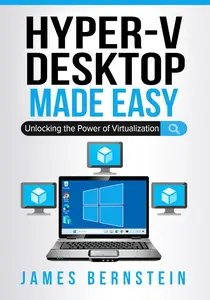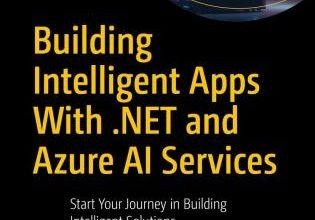Microsoft Hyper-V Desktop Made Easy: Unlocking the Power of Virtualization


Microsoft Hyper-V Desktop Made Easy: Unlocking the Power of Virtualization
English | April 4, 2024 | ISBN: N/A | ASIN: B0CZZ9SV8C | 148 pages | EPUB | 19 Mb
Information Technology has come a long way in the past 10 years and one of the greatest advancements in this field has to be that of virtualizing computers and servers in order to save IT administrators a lot of time and their companies a lot of money when it comes to building their backend systems. And now we can even go beyond virtualizing computers and virtualize our networks as well.
Because virtualization allows us to run multiple computers (virtual machines) on one piece of hardware it makes it’s easy to set up multiple systems quickly and also allows a way for us to set up “test” systems that we can use for our labs to test out new software and operating systems. Then when we are done, we simply wipe out that test system and it was like it was never there.
Since virtualization is so common within organizations, it was just a matter of time before it was implemented on a smaller scale so we could use it on our desktops. Microsoft Hyper-V has been around for some time and is widely used on Windows servers for enterprise level virtualization. But if you want to use this same software at home, you can use the Hyper-V for Windows Desktop edition which allows you to create multiple virtual machines within one physical machine (your desktop computer) and even let them communicate with each other via their virtual networks.
The goal of this book is to get you up and running with Hyper-V and cover all the things you need to know to get you started on creating virtual machines and a virtualized environment without confusing you at the same time. It sticks with the basics yet covers a wide variety of topics to help you achieve your goals and get your VMs up and running in no time.
The chapters in the book cover the following topics
Chapter 1 – Virtualization Basics
Chapter 2 – The Hyper-V Interface
Chapter 3 – Creating Virtual Machines
Chapter 5 – Using Your Virtual Machines
Chapter 5 – Virtual Machine Settings
Chapter 6 – Disk Management
Chapter 7 – Networking
Chapter 8 – Checkpoints
About the Author
James Bernstein has been working with various companies in the IT field for over 20 years, managing technologies such as SAN and NAS storage, VMware, backups, Windows Servers, Active Directory, DNS, DHCP, Networking, Microsoft Office, Exchange, and more.
He has obtained certifications from Microsoft, VMware, CompTIA, ShoreTel, and SNIA, and continues to strive to learn new technologies to further his knowledge on a variety of subjects.





